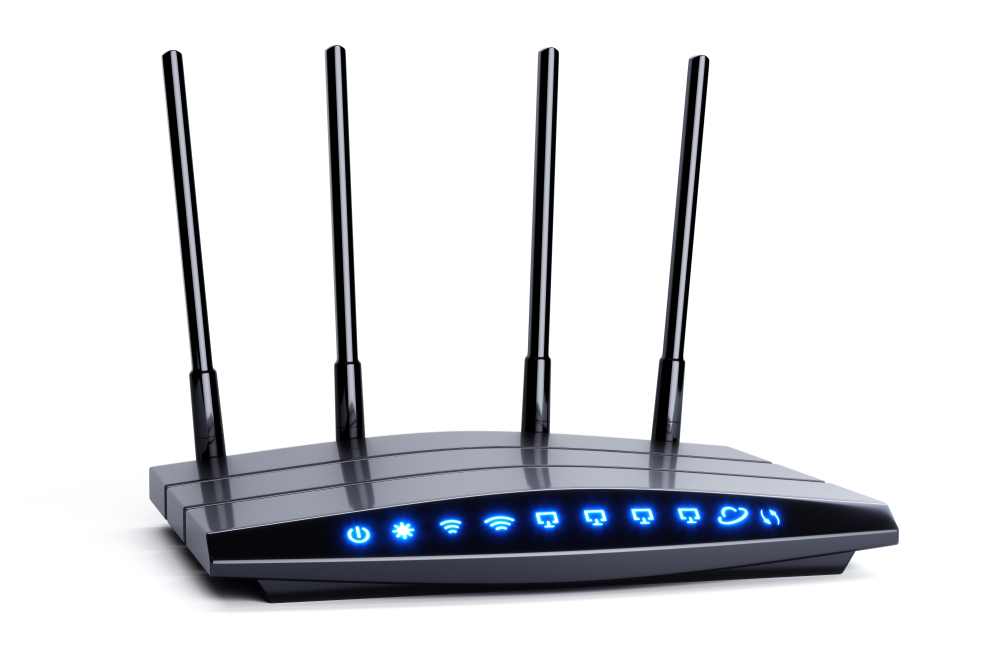There’s something elegantly simple about popping in a CD or gently dropping a vinyl disk onto a turntable. In fact, it’s a great way to enjoy being a part of what you’re listening to and for enjoying a direct-wired audio stream that isn’t reliant on a massive wireless network to deliver you the sounds you want to hear. That style of listening to music will never go away for those reasons, but Internet technology has opened our ears up to an entirely new way to enjoy music that is a magnificent doorway to all of the music you might want to hear at any given moment. But like everything in life, there’s a price to pay.
When your network doesn’t work it’s a sure way to ruin your evening and make you want to toss all of your gear into the nearest dumpster. Networking issues can be maddening for sure, but they don’t have to control your entire experience. The next time your network gives you grief, think of it this way – you’re a pioneer on the vanguard of a new technology and sometimes things get wonky, but the benefits far outweigh the inconveniences.
Or, you could follow a few easy tips for robust home audio networking and maybe alleviate some of the issues that make you wish for a simpler time when the Internet meant AOL and CD stores still populated the local mall. When it works, streaming is a fantastic way to access all the music. Whatever fancy strikes you, whenever it strikes, you can access any song in amazing resolution – that’s a very cool thing and totally worth the effort and occasional frustration.
When your network doesn’t work it’s a sure way to ruin your evening and make you want to toss all of your gear into the nearest dumpster. Networking issues can be maddening for sure, but they don’t have to control your entire experience. The next time your network gives you grief, think of it this way – you’re a pioneer on the vanguard of a new technology and sometimes things get wonky, but the benefits far outweigh the inconveniences.
Or, you could follow a few easy tips for robust home audio networking and maybe alleviate some of the issues that make you wish for a simpler time when the Internet meant AOL and CD stores still populated the local mall. When it works, streaming is a fantastic way to access all the music. Whatever fancy strikes you, whenever it strikes, you can access any song in amazing resolution – that’s a very cool thing and totally worth the effort and occasional frustration.

Let’s take a quick look at what happens when you stream a song…
The thought occurs to you > You open your streaming service app > You type the song name into your device > Your device contacts your local network which in turn contacts your Internet Service Provider (ISP) with your request > Your request travels to your ISP server and is sent up to a satellite to be delivered to the streaming service > The streaming service searches for your song amongst the millions of songs it has stored on its servers > Your song is sent as a digital file back up to the satellite to your ISP > Your song is then sent along the cables or wireless connections from your ISP to your home modem > Your modem/router sends the song to your device.
Your device then sends the song to your audio system which converts it to analog and sends it along to the speakers.
The thought occurs to you > You open your streaming service app > You type the song name into your device > Your device contacts your local network which in turn contacts your Internet Service Provider (ISP) with your request > Your request travels to your ISP server and is sent up to a satellite to be delivered to the streaming service > The streaming service searches for your song amongst the millions of songs it has stored on its servers > Your song is sent as a digital file back up to the satellite to your ISP > Your song is then sent along the cables or wireless connections from your ISP to your home modem > Your modem/router sends the song to your device.
Your device then sends the song to your audio system which converts it to analog and sends it along to the speakers.
When you look at it from the technical perspective, streaming music is actually incredibly complicated, with a lot of steps along the way that can mess with your vibe. The user interface – the part we deal with – is simple, but to actually make it all happen requires a lot of digital moving parts and a whole bunch of technology – some you have control over, most you don’t.


Is Your Router Doing Its Job?
If your home is greater than 1400 square feet, maybe not, especially if you have a lot of devices on your network. The router you get from your cable company or ISP is okay for small coverage with a minimal number of connected devices but if your home is larger than that or you are have a bunch of connected devices, your audio is going to suffer. If your router is far from your audio system, these problems are magnified. You’ll either have to deal with dropouts or a lower bitrate which results in loss of fidelity. If you’re serious about setting up a robust home audio network, the first thing you should consider is ditching the standard cable company router for something more powerful.
Adding a repeater or add-on router only makes the problem worse – the slower gear doesn’t speed up it just slows down everything else, so you really need to consider the best router possible if you want the best possible streaming experience – movies or music.
When you decide to upgrade your router, look into the newer “self-healing” devices that will find problems and re-boot accordingly saving you countless hours stomping about your home mumbling about your network.
If your home is greater than 1400 square feet, maybe not, especially if you have a lot of devices on your network. The router you get from your cable company or ISP is okay for small coverage with a minimal number of connected devices but if your home is larger than that or you are have a bunch of connected devices, your audio is going to suffer. If your router is far from your audio system, these problems are magnified. You’ll either have to deal with dropouts or a lower bitrate which results in loss of fidelity. If you’re serious about setting up a robust home audio network, the first thing you should consider is ditching the standard cable company router for something more powerful.
Adding a repeater or add-on router only makes the problem worse – the slower gear doesn’t speed up it just slows down everything else, so you really need to consider the best router possible if you want the best possible streaming experience – movies or music.
When you decide to upgrade your router, look into the newer “self-healing” devices that will find problems and re-boot accordingly saving you countless hours stomping about your home mumbling about your network.
Do Your Software Updates Before You Sit Down to Listen
Keep up with all of those push notifications alerting you to app updates and update them straight away. Nothing is worse than settling into your favorite chair to listen to some music and then having to wait for an hour while all of your apps update and re-synch with each other.
Keep up with all of those push notifications alerting you to app updates and update them straight away. Nothing is worse than settling into your favorite chair to listen to some music and then having to wait for an hour while all of your apps update and re-synch with each other.


Keep Your Audio and Video on the 5 GHz band and Your Refrigerator and Lights on the 2 GHz Band
The 5 GHz band is perfect for the bandwidths needed for streaming. Keep your high-end devices on the higher band and your low-end devices on the low band, but there are a few things you should be aware of. When using the 5 GHz band, the distance between the router and device needs to be as short as possible and it should also be as close to literal line-of-sight as you can make it. Walls filled with pipes and electrical wires wreak havoc on wireless communications in the upper frequencies. When in doubt, cable your router to your audio video system and do away with those concerns.
When selecting your network router channel, go 20 MHz wide. It may seem intuitive to go wider (40 MHz or 80 MHz) but all you’re doing is allowing other network transmitters to interfere with the audio channel. Twenty MHz is plenty wide enough.
The 5 GHz band is perfect for the bandwidths needed for streaming. Keep your high-end devices on the higher band and your low-end devices on the low band, but there are a few things you should be aware of. When using the 5 GHz band, the distance between the router and device needs to be as short as possible and it should also be as close to literal line-of-sight as you can make it. Walls filled with pipes and electrical wires wreak havoc on wireless communications in the upper frequencies. When in doubt, cable your router to your audio video system and do away with those concerns.
When selecting your network router channel, go 20 MHz wide. It may seem intuitive to go wider (40 MHz or 80 MHz) but all you’re doing is allowing other network transmitters to interfere with the audio channel. Twenty MHz is plenty wide enough.
The Higher the Resolution the Greater the Trouble
When you consider all of the links in the chain to get your song from the streaming service server to your system, it stands to reason that the denser the data, the greater the chance for the occasional hiccup. High resolution audio or video is very data dense, so the chance of a dropout is greater. If your wireless system, which we now know includes everything from the ISP and everything in between from the outbound request to the actual playing of the song or movie, isn’t as robust as possible, problems are going to be unavoidable. Your choice is basically to either live with the inconvenience or to make sure you’ve given your audio system the best possible chance to operate optimally by having the supporting network be up to the job. Otherwise, turn down the resolution in your streaming service’s menu and accept the compromise.
When you consider all of the links in the chain to get your song from the streaming service server to your system, it stands to reason that the denser the data, the greater the chance for the occasional hiccup. High resolution audio or video is very data dense, so the chance of a dropout is greater. If your wireless system, which we now know includes everything from the ISP and everything in between from the outbound request to the actual playing of the song or movie, isn’t as robust as possible, problems are going to be unavoidable. Your choice is basically to either live with the inconvenience or to make sure you’ve given your audio system the best possible chance to operate optimally by having the supporting network be up to the job. Otherwise, turn down the resolution in your streaming service’s menu and accept the compromise.


Is Your WAP Causing the Problem It Was Supposed to Cure?
If your Wireless Access Points (WAP) are set to jump from channel to channel in search of a channel without a lot of traffic, you may notice the jumps in the form of dropouts or clicks. For the first few minutes of operation this should be expected as your WAP settles in on the best channel, but if it is unable to settle in after that all you’re going to get are pops and dropouts every twenty or 30 seconds. Again, this is another problem caused by an attempted cure.
While we’re on the subject, mesh networks, range extenders and multi-hop systems are another “cure” that makes the problem worse, unless you’re not concerned about the added latency or dropouts caused by channel hopping and increased wireless data handling. With complex systems like home audio networks, simple is better and as simple as possible should be the goal. With that in mind – quality gear all around is must. If you’ve spent a fortune on a wireless music system but are using a standard off-the-shelf router and modem you just need to remind yourself that a chain is only as strong as its weakest link.
If your Wireless Access Points (WAP) are set to jump from channel to channel in search of a channel without a lot of traffic, you may notice the jumps in the form of dropouts or clicks. For the first few minutes of operation this should be expected as your WAP settles in on the best channel, but if it is unable to settle in after that all you’re going to get are pops and dropouts every twenty or 30 seconds. Again, this is another problem caused by an attempted cure.
While we’re on the subject, mesh networks, range extenders and multi-hop systems are another “cure” that makes the problem worse, unless you’re not concerned about the added latency or dropouts caused by channel hopping and increased wireless data handling. With complex systems like home audio networks, simple is better and as simple as possible should be the goal. With that in mind – quality gear all around is must. If you’ve spent a fortune on a wireless music system but are using a standard off-the-shelf router and modem you just need to remind yourself that a chain is only as strong as its weakest link.
Is Your Network Data Limiting?
Sometimes your ISP will throttle downlinks and this can often result in a bitrate as low as 125kbps even if your system claims the throttle is 3 Mbps or higher. You know what happens when your downlink is throttled? Dropouts and annoyance. In cases where you have to deal with throttled data, lower the resolution setting in the streaming service menu.
Sometimes your ISP will throttle downlinks and this can often result in a bitrate as low as 125kbps even if your system claims the throttle is 3 Mbps or higher. You know what happens when your downlink is throttled? Dropouts and annoyance. In cases where you have to deal with throttled data, lower the resolution setting in the streaming service menu.

You Can’t Cut Corners
If you’re thinking about adding additional WAP to make your network robust, you really need to consider hard-wiring those WAP to your main router with quality Cat-6 cable. Throwing a bunch or even a couple WAP onto an already struggling network just adds more wireless burden to the network – making the problem worse!
Be patient! Sometimes network issues work themselves out via the inherent algorithms. Sometimes issues as far away as the comm satellite or cable system head-end can be causing problems that appear to be a result of your audio system but in reality, have nothing to do with it. If the problems persist and you’re not an IT person, get your ISP involved or a trusted local audio dealer.
If you’re thinking about adding additional WAP to make your network robust, you really need to consider hard-wiring those WAP to your main router with quality Cat-6 cable. Throwing a bunch or even a couple WAP onto an already struggling network just adds more wireless burden to the network – making the problem worse!
Be patient! Sometimes network issues work themselves out via the inherent algorithms. Sometimes issues as far away as the comm satellite or cable system head-end can be causing problems that appear to be a result of your audio system but in reality, have nothing to do with it. If the problems persist and you’re not an IT person, get your ISP involved or a trusted local audio dealer.
Give your wireless audio system a fighting chance to deliver everything you’re expecting by making sure the network it’s connected to is as robust as possible. Connecting a high-end audio system to an underperforming network will only make the high-end audio system underperform, and that’s no fun for anyone.
By Jack Sharkey for KEF



